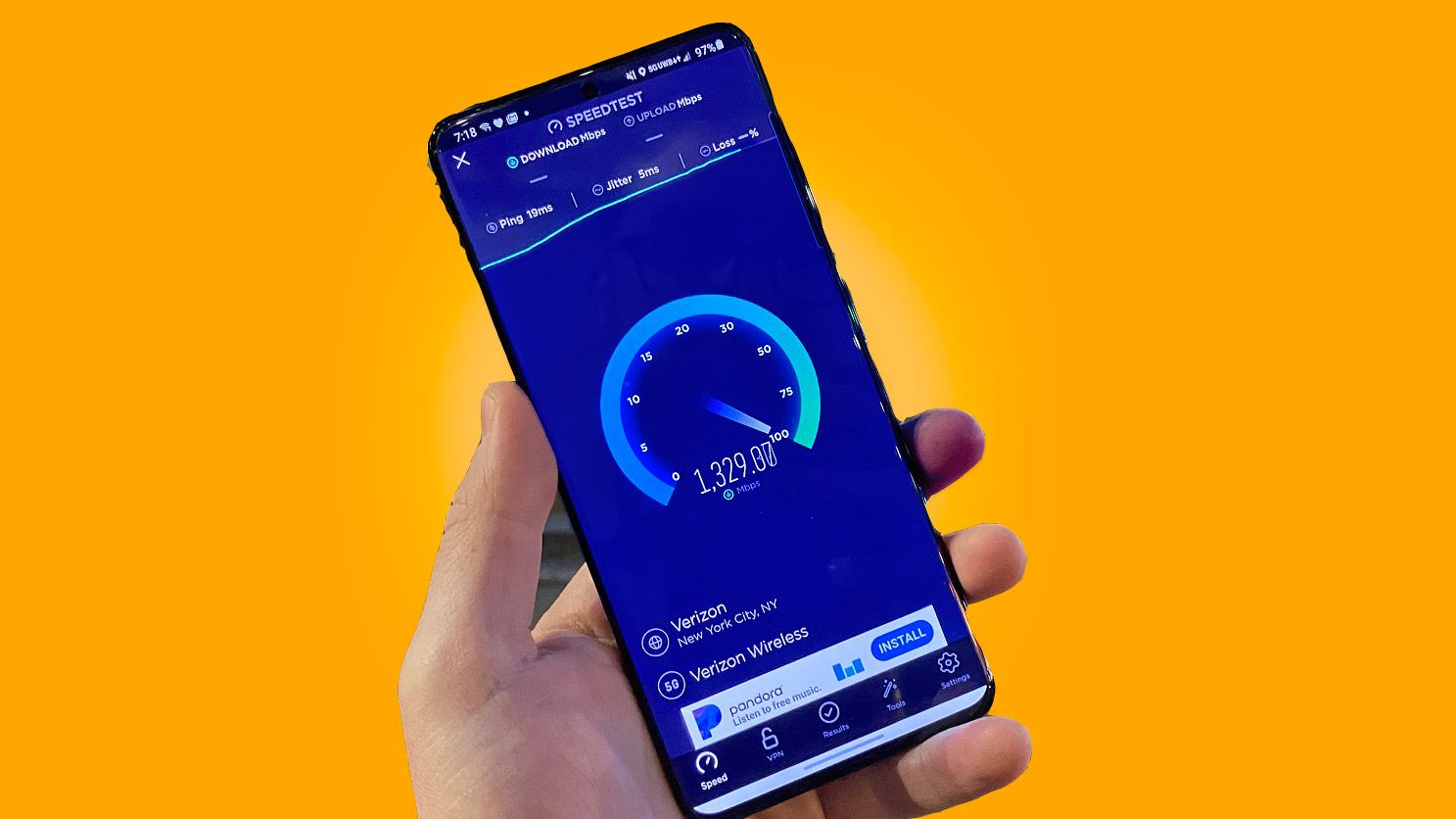While all eyes are on 5G in 2020, there are many other reasons to expect it’ll be an enormous year for the mobile arena. Foldable and dual-display devices also are looking to require off during a major way in 2020, while the potential launch of Apple’s iPhone-connected AR headset is another possible highlight. Meanwhile, within the business world, the revival of BYOD (bring your own device) efforts and a greater specialize in mobile security and Unified Endpoint Management are other key themes in mobile to seem for next year.
What follows are 10 mobile trends to observe out for in 2020.
5G
Sure, 5G has gotten off to a gradual start thus far. But 2020 could mark truth coming-out party for high-speed 5G connectivity. the rationale is often summed up in two words: 5G iPhone. Apple is widely expected to be planning its first 5G-capable iPhone model—or models—for the autumn of 2020.
In tandem, the main carriers are planning significant rollouts of 5G networks next year. as an example, Verizon CEO Hans Vestberg recently pledged to bring 5G access to half the U.S. population in 2020. While smartphone vendors like Samsung have already launched 5G-capable models, that company and therefore the other major phone vendors are all likely to urge into the 5G game because the carrier deployments get more widespread in 2020.
While the smartphone market has been sagging lately, the arrival of 5G is predicted to return the market to growth next year. Worldwide smartphone sales are predicted to grow 2.8 percent in 2020, after dropping 2.5 percent this year, consistent with research firm Gartner. that might put the smartphone market back above 2018 levels, and therefore the expected 5G iPhone might be among the main factors within the growth, Gartner reported.
Sales of the iPhone are slipping due partially to slower paces of upgrades by users, but a 5G iPhone would offer a fresh reason for upgrades, the firm said. “Sales will start to build up within the last half of 2020 because the coverage and availability of 5G hardware services improve,” said Annette Zimmermann, research vice chairman at Gartner, during a news release.
Foldable Android Devices
Samsung ignited the foldable phone movement this year with the Galaxy Fold, and there are signs that foldable Android devices might be a way bigger theme in 2020. The Galaxy Fold—the industry’s first mainstream foldable smartphone—launched within the U.S. in September with an almost $2,000 tag and usually favorable reviews (at least this point around—the initial version was suffering from failed displays and other issues).
While it’s no surprise that other Android smartphone players would look to follow Samsung’s lead (Huawei already features a foldable phone on the way), the larger news within the space is that Microsoft plans to return out with a foldable phone in 2020. the corporate recently teased the Surface Duo, a dual-display Android device that will have cellular connectivity and may be used for creating calls. it’ll feature dual displays of 5.6 inches each that are connected by a 360-degree hinge (that’s one inch bigger per display than the Galaxy Fold). Microsoft said the Surface Duo is coming within the fall of 2020.
Foldable Windows Devices
Microsoft is additionally in the middle of another foldable trend that’s expected to select up steam in 2020: foldable Windows devices. For starters, alongside the Surface Duo, Microsoft is additionally getting to launch the Surface Neo dual-display device next fall, featuring a pair of 9-inch displays. Unlike the Duo, however, the Surface Neo will run Windows—specifically, a replacement version of Windows dubbed Windows 10X. and therefore the Surface Neo won’t be the sole Windows 10X device expected next year.
Microsoft said Windows 10X is going to be available on devices from HP Inc., Dell, Lenovo, and Asus. Earlier this year, Lenovo announced plans for a foldable laptop which will be joining its ThinkPad X1 family in 2020.
AR Accessories
Apple is getting to launch its first augmented-reality headset and other new hardware products during the second quarter of 2020, consistent with a search note from well-known Apple analyst Ming-Chi Kuo. Apple is reportedly working with third-party brands on the AR device, which is being described as a pair of augmented-reality glasses.
Kuo believes that the AR glasses are going to be positioned as an adjunct for the iPhone—with the glasses mainly providing a display while a wirelessly connected iPhone provides the processing power and other functionality, reports said. which will make the glasses into more of a mobile accessory than a number of the opposite augmented-reality devices that have launched so far. And in fact, where Apple goes, many other vendors are often expected to travel also with their own AR accessories.
Always Connected Devices
There’s been a slow integrate in recent years of “always-connected” devices, like tablets and laptops, which may hook up with cellular–essentially replicating the key functionality of smartphones during a larger form factor (and typically with a keyboard option). Signs are pointing to 2020 because the year when the trends become even more prevalent thanks partially to the spread of 5G availability. Lenovo has announced that it’s working with Qualcomm to develop “the world’s first 5G PC,” which can be an always-connected laptop that uses Qualcomm’s Snapdragon X55 5G modem.
The so-called “Project Limitless” device is planned for early 2020, Lenovo said. Meanwhile, Microsoft’s redesigned Surface Pro 2-in-1 tablet–the Surface Pro X–is arriving toward the top of 2019 and can feature a custom ARM-based processor that’s being designed with the assistance of Qualcomm. The processor, dubbed the Microsoft SQ1, helps enable mobile connectivity over LTE Advanced, Microsoft said.
New Battery Technology?
This year, three scientists shared the Nobel prize in Chemistry for his or her roles within the development of the lithium-ion battery–the standard battery technology utilized in smartphones and laptops (as well as electric vehicles). “They created a changeable world,” The Royal Swedish Academy of Sciences said in summarizing the achievement.
But the lithium-ion smartphone battery might be getting some competition as soon as 2020. Rumors suggest that Samsung might be looking to introduce a smartphone featuring graphene battery technology within the next year or two, as to how to spice up both battery life and charging speeds. “Lithium-ion batteries are…suboptimal.
Samsung is hoping to possess a minimum of one handset either next year or in 2021, I’m told, which can feature a graphene battery instead,” wrote Evan Blass, who features a strong diary for leaked smartphone information, during a recent tweet. “Capable of a full charge in under a half-hour, they still got to raise capacities while lowering costs.”
Renewed BYOD Push
New capabilities in Apple’s iOS 13 should address many worker concerns around participating in bring-your-own-device programs, potentially resulting in a renewed push for BYOD adoption. Apple’s new User Enrollment solution allows corporate workers to simply keep their personal data and business data separate on their iPhone. As a result, employees do not have to stress about the likelihood of intrusive actions being taken by their IT department—such as remote wiping of their device data or a change of their passcode.
Those kinds of concerns have hampered BYOD efforts at a time when many businesses want to ascertain more adoption since BYOD has been shown to extend productivity and is required for using many workplace apps. User Enrollment should help to eliminate the fear of “big brother” with BYOD programs, said Marco Nielsen, vice chairman of managed mobility services at Stratix, a mobility service provider and Apple partner based in Peachtree Corners, Ga. “We might see a replacement wave of BYOD coming alongside this, specifically within the Apple realm,” he said.
Mobile Threat Defense
The spread of security threats has meant that smartphones aren’t immune, creating the necessity for businesses to think about mobile security solutions for both iOS and Android platforms. Mobile Threat Defense (MTD) solutions, which have matured in recent years, offer protection by preventing, detecting, and remediating mobile attacks, research firm Gartner said during a recent report. Key use cases include mobile phishing, app vetting, and compliance, and therefore the MTD market “continues to possess organic growth,” Gartner said. “By 2020, 30% of organizations will have MTD in situ, a rise from but 10% in 2018.”
Unified Endpoint Management
Meanwhile, Unified Endpoint Management solutions–which provide a central console for managing both PCs and mobile devices–are also maturing, consistent with Gartner. “UEM tools still mature as buyers migrate PCs faraway from legacy client management tools,” Gartner said during a recent report. One notable evolution within the UEM space includes the mixing of UEM solutions with client management tools (CMTs) and processes, the research firm wrote.
“This is due to the continued migration of PCs from legacy CMTs to UEM that Gartner witnesses during a majority of end-user organizations,” Gartner said. The leading UEM vendors currently are VMware, Microsoft, MobileIron, IBM, BlackBerry, and Citrix, consistent with Gartner.

